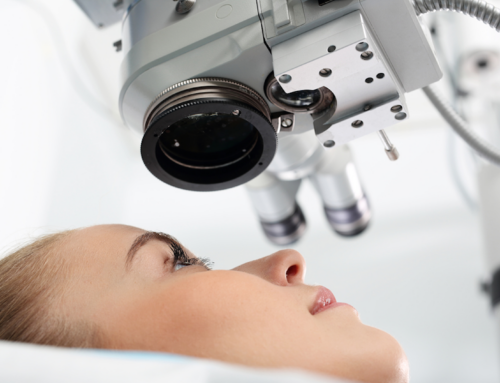
Our eyes, along with the rest of our bodies, changes as we age. Maybe it gets harder to read a favorite book or family recipe. Or you have trouble distinguishing certain colors. For those older than age 40, these can all be common signs of aging. However, scheduling regular eye exams with an ophthalmologist can help you maximize your vision, as well as look out for potential health risks. Here’s what we look for during eye exams — and how frequently you should consider getting checked.
Dilated Eye Exams
A dilated eye exam is important for checking the health of your eyes, even if you’re not experiencing any specific issues. It can help to detect many eye diseases and conditions, which can help to prevent vision loss.
Some common eye diseases and conditions we look for include:
- Age-related Macular Degeneration (AMD) — Over time, AMD can destroy sharp, central vision. Central vision allows you to see objects clearly and aids in day-to-day tasks, such as reading or driving.
- Cataract — Our eyes have a clear, natural lens. When you have a cataract, that lens becomes cloudy. This can result in blurred vision, light sensitivity, trouble seeing well at night, or seeing bright colors as faded or yellow.
- Diabetic Eye Disease — Nearly 30 million Americans have diabetes, which is 9.4 percent of the total U.S. population, according to the Centers for Disease Control and Prevention. For this group of people, eye exams are particularly important, as diabetes can lead to poor vision or even blindness if it’s not properly managed.
- Glaucoma — Fluid build-up in the front part of your eye can result in a disease called glaucoma. The extra fluid increases pressure, causing damage to the optic nerve. It’s the leading cause of blindness for those older than age 60, according to the American Academy of Ophthalmology. Fortunately, that can often be prevented by early treatment.
Eye Exam Frequency By Age
No matter how old you are, it’s important to get your vision checked. It can help with the early detection — and even prevention — of many of the above diseases and conditions. How often should you get checked? It depends on your personal health history, as well as that of your immediate family members.
However, the below guideline from the American Optometric Association can act as a helpful guide for those who are of low risk for eye diseases or conditions:
- Birth to 2 years old — At 6 to 12 months, or as recommended
- 3 to 5 years old — At lease once between age 3 and 5, or as recommended
- 6 to 18 years — Before first grade and then annually
- 18 to 39 — At least once every two years
- 40 to 64 — At least once every two years
- 65 and older — Annually
By taking a proactive approach to your eye health, you may be able to enhance your vision — and your quality of life — for years to come.
 New Address:
New Address:



